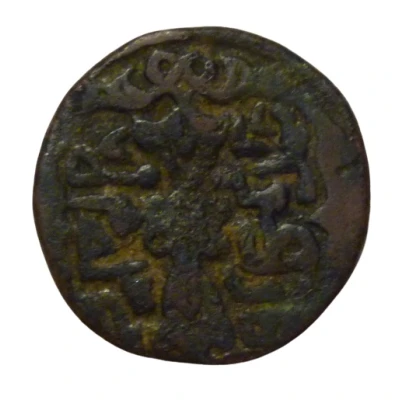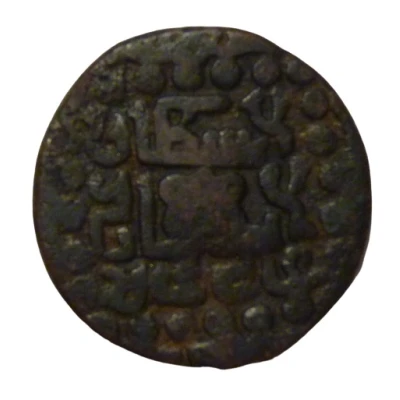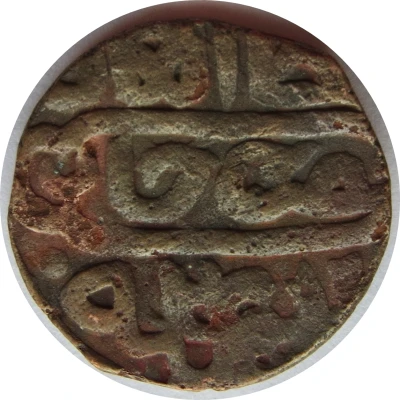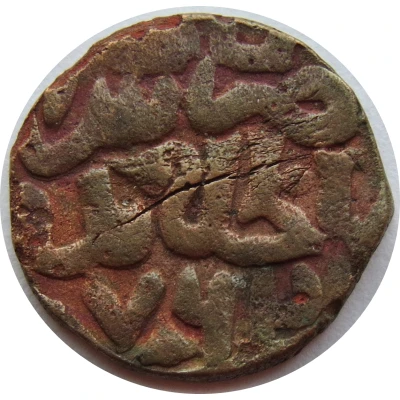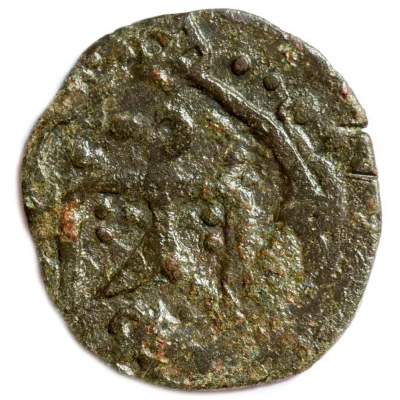
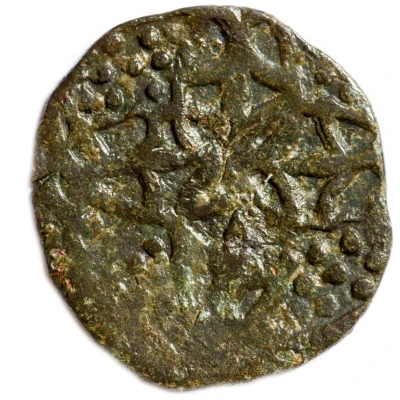

Pul "Three-legged bird-shaped tamga and ornament"- Anepigraphic - Mamay Ordu ND
| Copper | - | - |
| Issuer | Golden Horde |
|---|---|
| Governor | Mamay (1361-1380) |
| Type | Standard circulation coin |
| Years | 1355-1380 |
| Value | 1 Pul (1⁄16) |
| Currency | Dinar (1227-1502) |
| Composition | Copper |
| Shape | Round (irregular) |
| Technique | Hammered |
| Orientation | Variable alignment ↺ |
| Demonetized | Yes |
| Updated | 2024-10-06 |
| Numista | N#301395 |
|---|---|
| Rarity index | 93% |
Reverse
A complex pattern consisting of two intersecting rosettes and a set of dots
Comment
Mamay (1335–1380) was a powerful military commander (beqlar beg) of the Golden Horde. In the second half of the 1360s he established control over a significant part of the Golden Horde, which in modern historiography was conventionally called the "Mamay Horde". However he was not a Juchid, therefore he couldn't be a khan and couldn't place his name on the coins.
At the same time, Mamay's almost unlimited power in the territories under his control assumed its proclamation (designation) in one form or another, which could be done more simply and effectively by placing appropriate signs (symbols) on coins like three-legged tamgha.
Researchers V.P. Lebedev and E.E. Kravchenko, in his article “The Juchid anepigraphic pool with a bird-shaped tamga on monuments from the Dnieper-Don interfluve” (2016), notes, in particular, that “this not rare pool has been known for a long time.”
Its description and drawing can be found in the classic work on the Golden Horde numismatics by H.M. Fren (1782 - 1851) "Coins of the Khans of the Ulus of Juchiev or the Golden Horde, with coins of various other Muhammadan Dynasties in addition ..." (1832) where it is noted that the coin "without an inscription, but only with various kinds of decorations”, and: “One of them gave such a look to Tamga that the upper part of it can be mistaken for the head of a bird, and the lower one for its two wings”.
As noted by V.P. Lebedev and E.E. Kravchenko, coins of this type, “usually in several copies”, are found “at all large and long-existing medieval urbanization centers in the central regions of the Golden Horde” - in the city of Bulghar (Bolgar), on the Selitrennoye settlement (the presumed location of the city of Saray or Saray-Batu), on the Vodyansky settlement (the alleged location of the city of Beldzhamen), in the city of Azaq, the city of Majar, in the lower reaches of the Dnieper and Dniester rivers, in the Northern Azov region, etc.
At the same time, the variety of variants of the “bird-shaped tamga” design attracts special attention, which is depicted with a left or right “turn” of the head, various bends of the side “legs” (“wings”) and coming from them processes, with varying degrees of bifurcation of the median "leg", different thicknesses of the forming lines, etc. In some cases the middle "leg" of the tamgha is so bifurcated that it gives this sign (symbol) the appearance of a walking mythical creature with a bird's head, a straight torso, "arms-wings" and "human" legs.
V.P. Lebedev and E.E. Kravchenko defined this bifurcation as a “dovetail”, noting, however, that “for the sites of the North Caucasus (Majar and Lower Dzhulat)” a “variant without a clearly bifurcated dovetail” is typical. At some puls an animal which has rather not a “dovetail”, but “legs” going to the right can be clearly detected.
Based on a comparison of repeating varieties of drawings with the geography of finds of coins of this type, researcher S.A. Burkovsky suggested that an anepigraphic pool with a “bird-shaped tamga” could be minted simultaneously at different mints. This theory was supported by V.P. Lebedev and E.E. Kravchenko, so, the assignment by R. Savosta of such puls to al-Jadida mint seems likely, but not exhaustive.
Source
Interesting fact
The interesting fact about this coin is that it features a unique three-legged bird-shaped tamga, which is a symbol of the Golden Horde, a Mongol khanate that ruled over much of Eastern Europe and Central Asia during the 13th to 14th centuries. The tamga is surrounded by intricate ornaments, showcasing the skill and craftsmanship of the coin's designers and mintors. Despite being made of copper, a relatively common metal, the coin's design and historical significance make it a valuable and interesting piece for collectors and historians.
